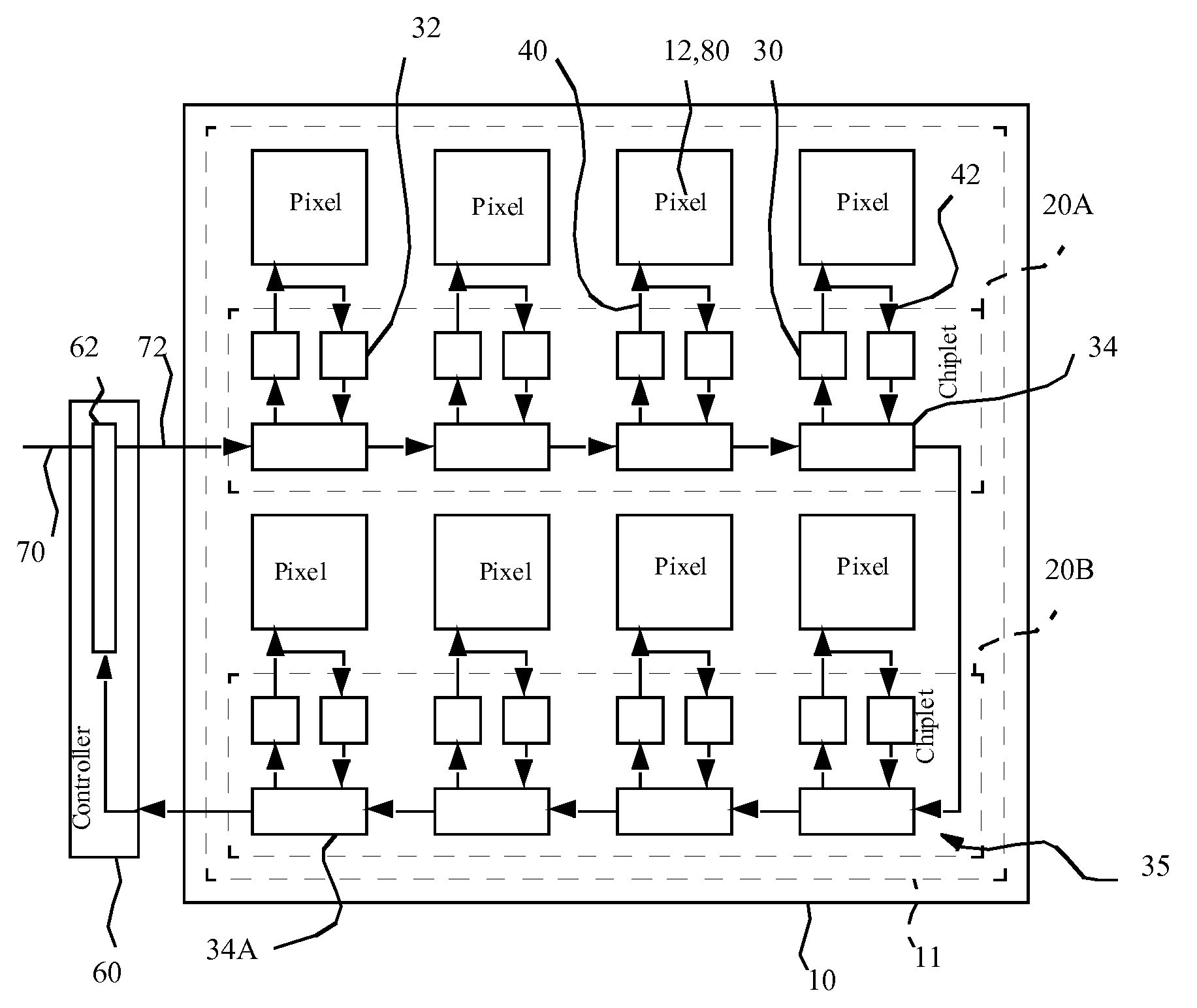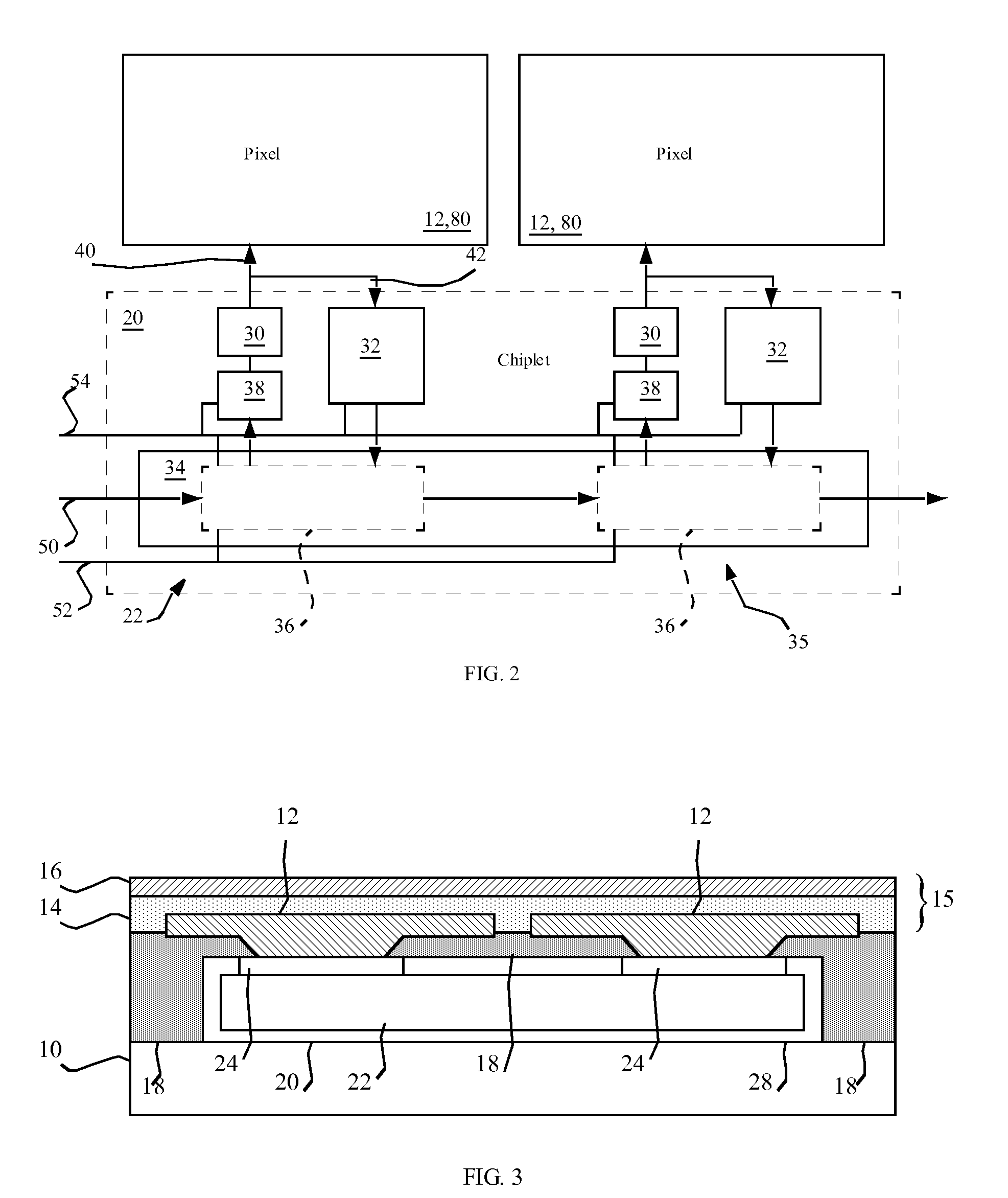Fault detection in electroluminescent displays
- Summary
- Abstract
- Description
- Claims
- Application Information
AI Technical Summary
Benefits of technology
Problems solved by technology
Method used
Image
Examples
Embodiment Construction
[0026]Referring to FIGS. 1 and 3, in one embodiment of the present invention, a display device includes a display substrate 10 having a display area 11. A plurality of pixels 80 are formed over the display substrate 10 in the display area 11, each pixel including a first electrode 12, one or more layers of light-emitting material 14 formed over the first electrode 12, and a second electrode 16 formed over the one or more layers of light-emitting material 14, the light-emitting material emitting light 14 in response to a current passed through the light-emitting material 14 by the first and the second electrodes 12, 16 with a driven electrical signal. A driving circuit 30 is located in the display area 11 for each driven electrical signal, the driving circuit 30 providing the driven electrical signal 40 corresponding to a desired pixel luminance value 72 to the first or second electrode 12, 16 of the pixel 80, the driven electrical signal 40 producing a current passed through the lig...
PUM
 Login to View More
Login to View More Abstract
Description
Claims
Application Information
 Login to View More
Login to View More - R&D
- Intellectual Property
- Life Sciences
- Materials
- Tech Scout
- Unparalleled Data Quality
- Higher Quality Content
- 60% Fewer Hallucinations
Browse by: Latest US Patents, China's latest patents, Technical Efficacy Thesaurus, Application Domain, Technology Topic, Popular Technical Reports.
© 2025 PatSnap. All rights reserved.Legal|Privacy policy|Modern Slavery Act Transparency Statement|Sitemap|About US| Contact US: help@patsnap.com



